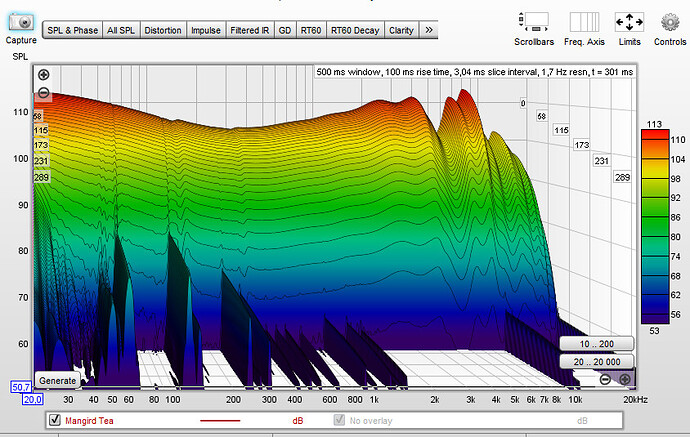K3 has a high noise floor as well as 1.8 OI. Not a surprise if it’s hissing with some iems.
Dang… I didn’t know 
No wonder even my Tea hisses on the K3 on higher volumes
And that xduoo amp is a hybrid amp. So it’s no question that it will hiss with iems.
Yeah, that was expected due to its external power input.
I got a ifi Zen Dac v2 incoming, have you heard of any reports on its noise floor situation? (just googling now but don’t see any info)
They claim it has 1 OI. If that is true, then It is better than the k3.
The tube Amp hisses due to it having a very high OI, most amps like that have around 10 ohm.
It was also hissing with Sonata HD Pro too on low gain, that’s why I sold mine.
2021-11-14: Waterfall graph coherency reading.
I might have learned how to tell coherency from waterfall graphs, which I will show now.
Procedure: I tested my theory on my own, judging the iems I have heard myself and was correct 100% of the time. Which then led me to look at graphs (thanks to @MRSallee for sharing his graphs) I havent heard and ask for confirmation from @nymz If I was right or wrong.

See how the bass has a lot of red coloring on the GK10? While the mids does not have it and that treble, very little?
That shows that there are different driver speeds doing those areas, that is why it translates to you hearing different drivers doing their own thing. (incoherency)

on the other hand, the Falcon Pro has a lot of red area as well, showing that it is on the slower side as well. But this time, that slower speed is shown from bass to treble. Not as much as on the mids, but that is fine IRL.

The P1 Plus have very fast speed across the range and is consistent, that is why it is very coherent.

The A7 (Pop-red) also looks coherent, because there isnt a lot of red coloring here with the bass (mostly with sub-bass), so that matches well with the low amount of red with the treble

The DQ6 also looks excellent, with very fast speed on from bass to treble
Conclusion: If a waterfall graph is consistent in its coloring from bass to treble, it is on the more coherent side. How coherent it is, is judged by the level of consistency
What do the colours represent on the graphs? What is the unit?
I have very few experience with waterfall graphs, but I thought the most important data was to be seen on the “depth” axis. I have the feeling that the coloration is only dependant on elevation, so would only represent dB differences.
The coloration from what I know is the speed. (not sure if its the decay or attack, probably the decay though.)
Red being slower than blue (as you can see from the bar to the right).
From what I’ve just read from the REW documentation, the decay is shown with the “depth” axis, and the coloration is only tied to the dB (so the height axis). Having this coloration helps, like maps with elevations marks, in visualizing the “height” axis in a 3D representation.
So to see decay, you should look at the “thikness” of the curve for a given frequency. And as we see on your graphs, iem being a very controlled/invariant environment, the decay (IE abruptness of the depth slope) is quite astonishingly even across the frequency range.
My guess is if you take a mono-dd iem with a deep between 200Hz and 2kHz (with the other parts being at the same level), you’ll see much red with good coherency.
Doesnt make sense to me, since if you look at the DQ6 and the A7 above. They have a similar bass quantity, but the A7 has more red, which IRL is actually the slower/looser bass.
Now, gimme the good stuff.
Show me Teas graph 8)
what’s the deal with those fins?
No clue. 
2021-11-14: Tin Hifi P1 Plus: Tin HiFi P1 Plus - Reviews | Headphone Reviews and Discussion - Head-Fi.org
stock rank: A+
Mod (PEQ) rank: S
They went plus ultra this time. If you want a planar iem, this is the one you want.
The a7 goes higher in SPL and has a slower initial decay => the red surface is bigger.
You’re reasoning may be right (difference in coherency is explained by a difference of decays between drivers), but the parts of the graphs you look aren’t the good ones.
You can’t just look the surface of the red: you have to look at the different shapes of the coloured surfaces.
On the dq6 and the a7, you can see the colour limits are quite parallel(the shape of the red-yellow frontier is the same as the shape of the yellow-green frontier) whereas the colour limits for the gk10 are way more diverse. And that could explain coherency differences.
Wait better than Timeless?
In stock and no contest with PEQ.

